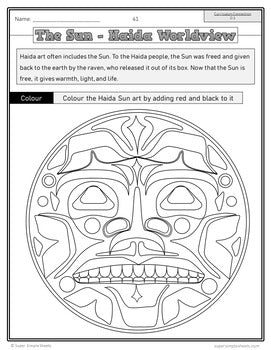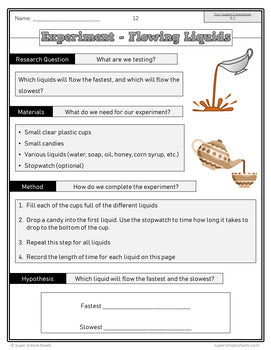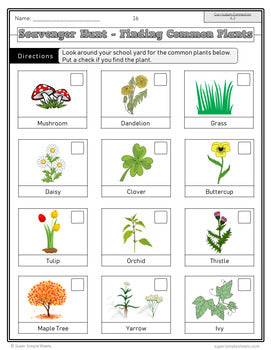BC Grade 1 Science Full Year Bundle
BC Grade 1 Science Full Year Bundle
Interested in a bundle? Shop below instead!
Couldn't load pickup availability
PRODUCT PREVIEW
PDF AND GOOGLE SLIDE VERSIONS BOTH INCLUDED!
British Columbia (BC) 2016 Science Curriculum - Grade 1. This product was created to cover all topics in the 2016 BC Science Grade 1 curriculum
There are 500+ activity sheets that cover the elaborations and big ideas in the science curriculum. This massive unit contains readings, surveys, cut and paste activities and a variety of fun activities – drawings, word searches, matching, word scrambles, fill in the blanks, and more!
We have added STEM activities as well as hands on experiments for students to learn the content in the curriculum.
Check out the previews of these units to learn more about how it can benefit your students. We know you will love this no-prep, just print or upload to Google, time-saving resource!
Living Things
Some of the concepts that are covered:
- Classifying living and non-living things
- Living and non-living things in your environment
- Living things – animal or plant?
- Indigenous methods for classifying living things – edible/inedible and totemic and non-totemic
- Names of common plants
- Scavenger hunt – finding common plants
- Creeper versus climber plants
- Describing animals and pets
- Describing plants using physical characteristics (size, shape, parts, colour)
- Basic needs of plants and animals (living things)
- Basic parts of a plant – stem, roots, flower, leaf, and seeds
- Classifying animals – vertebrates and invertebrates
- Mammals, reptiles, amphibians, fish, and birds
- Sorting animals based on their characteristics
- Plant adaptation – dormancy
- Animal adaptations – camouflage, territorialism, migration, hibernation
- How animals eat and find food – what each animal eats
- Shelters for different animals
- Unit Test
- Answer pages for all activities
Matter and Materials
Some of the concepts that are covered:
- What is matter?
- Matter – solid, liquid, gas
- Liquids and gases can flow, solids cannot
- Experiment - Flowing liquids
- Properties of liquids – freeze and flow
- Properties of solids – melt and hold their shape
- Properties of gas – flow and take shape of their container
- Experiments to show properties of matter – does air have weight?
- What are materials?
- Examining objects by determining which materials the objects are made of
- Where we get materials – metal, wood, plastic, fabrics
- Describing the properties of materials – hard, soft, flexible, etc.
- Experiments – Can you poke a hole in a balloon? Blowing up frozen versus warm balloon
- Experiment – Testing materials to catch bubbles
- Materials that absorb and repel water
- Materials that float and sink
- Experiment – Does the material float or sink?
- Indigenous use of materials – cedar to build canoes and Haida houses
- Indigenous use of the buffalo – bones to make tools
- Recycling materials – plastics and paper products
- Making a classroom plan – reducing waste in the classroom
- Human-made and natural structures
- Analyzing everyday structures – houses, bridges, and towers
- The purpose of structures and the materials they are made of
- Strong structures – ordering the strength of bridges and towers
- Fasteners – strength of each
- When we use certain fasteners
- Close look at structures and the fasteners used to build the structures
- Experiment – building a satellite tower
- Unit Test
- Answer pages for all activities
Light and Sound
Some of the concepts that are covered:
- What is energy?
- Light energy
- Natural and artificial light sources
- Emitting and reflecting light
- Natural light emitters
- Materials that reflect light
- Light – how we see colour
- Brightness
- Activity – colouring rainbows using dark or bright colours
- What are shadows?
- Activity – drawing shadows
- Activity – creating animal shadows
- The Sun – light energy
- Plants growing towards light
- Sunlight – sunburns
- Sound energy
- Artificial and natural sounds
- How sound is made – vibrations and sound waves
- Pitch, tone, and volume
- Experiment – using glass and water to create sounds with different pitches
- Sound travels through matter
- Recording sound – microphones, voice recorders, phones
- Unit Test
- Answer pages for all activities
Patterns and Cycles
Some of the concepts that are covered:
- The Sun – Several activities related to the Sun
- Living without the Sun
- The Earth’s rotation and revolution
- What is a cycle?
- Plant life cycle
- Day and night cycle and seasonal cycle
- The Sun – light and heat
- Experiment – making a sundial
- Day and night – relationship with the sun
- Experiment – Orbiting Earth around the Sun
- The Moon – lunar cycle
- Activity – cookie moon phases
- Indigenous Lunar Cycle
- The Sun – Haida Worldview
- Haida art – the Sun
- Seasons – why we have seasons
- How the Sun (heat and light) creates seasons
- Several activities about Summer, Fall, Winter, and Spring
- What activities we do during each season
- Where the Sun is during each season – how that affects the weather and length of day
- Hibernating and migrating animals during the winter
- Adaptations humans and animals make to survive the different seasons
- Effects of seasons on humans and other living things
- Seasonal Rounds – Coast Salish, Métis, and Athabascan First Peoples
- Creating your own seasonal round
- Answer pages for all activities
- Unit test
This is a comprehensive bundle that will save you hours of planning! It has been tested and found effective in helping students learn the big ideas in the curriculum.
Share













